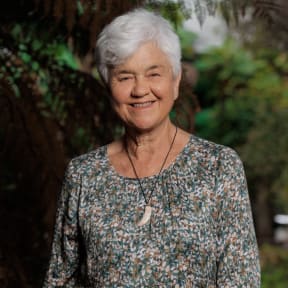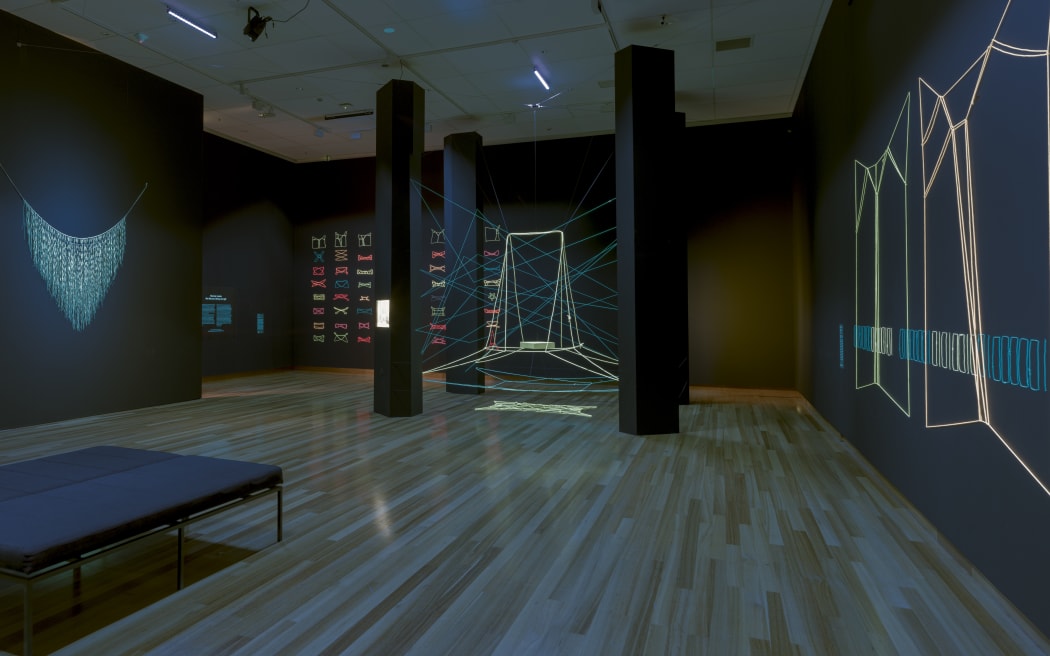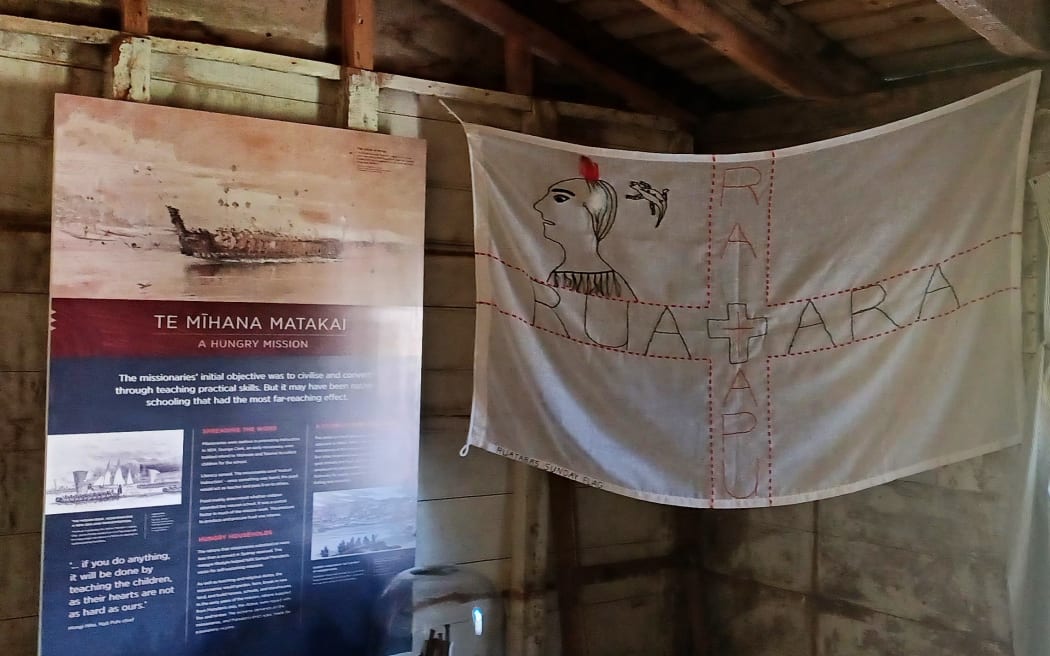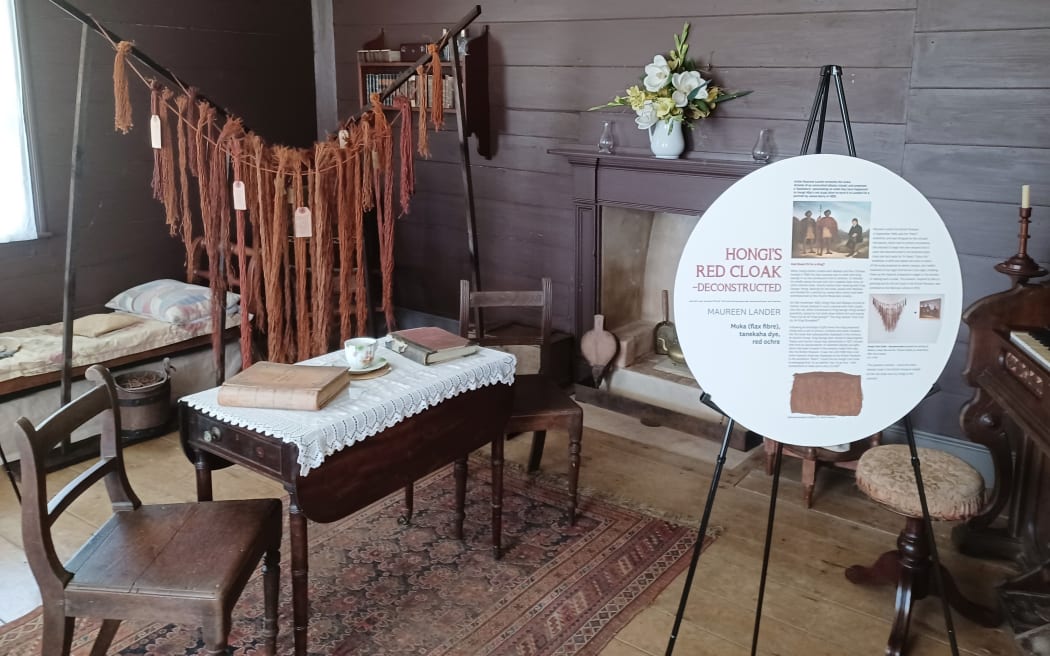
Maureen Lander Photo: supplied
This weekend at Auckland Museum there is a rare overnight wananga to share matauranga Māori knowledge around an extraordinary object: Te Rā, the only customary Maori sail in existence. It has returned to Aotearoa for exhibition, after 200 years in storage at the British Museum.
Made from harakeke, kererū, kāhu and kāā feathers and dog skin, Te Rā is almost four-and-a-half metres high. It was previously shown late last year at the Christchurch Art gallery.
One of those at the gathering is trailblazing installation artist, weaver and teacher Dr Maureen Lander. In 2010, Lander enabled experienced Northland weaving group Te Rā Ringa Raupā to visit the British Museum. Having been able to then see Te Rā first hand - and how its most complex parts were done - they have taken up the challenge to lead recreation of Te Rā.
"We speak its language. Or, we think of it as 'her'. As a kuia and a teacher. So because we speak her language, she spoke to us."
Born in Rawene, Lander is of Ngāpuhi, Te Hikutu, Irish, Scottish and English descent.
A teacher and mentor for most of her life, Lander is a former senior lecturer in Māori material culture at the University of Auckland. A leading exponent in both experimental and customary Māori weaving, she has led a major role in its contemporary evolution, basing exciting rich art installations in rich research into our history.
![Makers unknown Te Rā [the sail] (detail) c. 1770–1800. Harakeke, kererū, kāhu and kākā feathers, dog skin. On loan from the Trustees of the British Museum. © Whakaarahia anō te rā kaihau Te Rā Project. Photo: Cultural Heritage Imaging](https://media.rnztools.nz/rnz/image/upload/s--8XZT4RPA--/ar_16:10,c_fill,f_auto,g_auto,q_auto,w_1050/v1695924743/4L1XPFF_1_feathers_jpg)
Makers unknown Te Rā [the sail] (detail) c. 1770–1800. Harakeke, kererū, kāhu and kākā feathers, dog skin. Photo: Supplied / Auckland Museum
For the opening of Te Papa Tongarewa in 1998, Lander used UV light, strings, video and photographs to create a phenomenal installation String Games. Aho Marama: Strings of Light at Christchurch Art Gallery re-presents String Games. The work brings together customary Māori string games and the conceptual art history of Marcel Duchamp. Duchamp’s work with string helped birth installation art as we know it.

Installation image of Aho Marama: Strings of Light at Christchurch Art Gallery Photo: John Collie
The translation of material culture into the digital world also relates to Dr Lander’s own work. After nearly 40 years practise, she is developing a digital archive of material related to her work with her daughter Kerry Lander. The subject of a new instagram account.

Ruatara Flag by Maureen lander at Kerikeri Mission House Photo: supplied
Maureen Lander is about to return to Hokianga, to take up an artist’s residency in a former church in Rawene. Her whakapapa is also reflected in another current exhibition, Ruatara's Flags and Other Fabrications currently showing in the historic Kemp House at the Kerikeri Mission Station. Connecting us to the events that occurred here 200 years ago, the artworks are inspired by the strong connections of Ngāpuhi figures like Hongi Hika, Ruatara and Hariata Rongo to the Mission Station. Lander’s work ‘Hongi's Red Cloak (Deconstructed)’ for example is showing in the very parlour where Hongi and William Kemp would sit and talk. The exhibition will run until April.

Responding to Hongi Hika's visit to Kemp House: Maureen Lander's Red Cloak Photo: supplied
Meanwhile, Te Rā: Navigating Home is at Auckland Museum until 26 May at the Auckland Museum and Aho Marama: Strings of Light at Christchurch Art Gallery until 14 July.
Culture 101’s Mark Amery spoke to Maureen Lander just ahead of the weekend’s wānanga at Auckland Museum.

